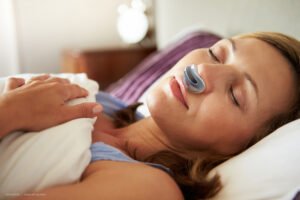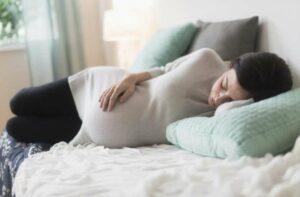Sleep apnea is a common disorder that affects the quality of sleep. If you suffer from this condition, then there are many ways to tell if it’s present. Some people have trouble breathing in their sleep. Others may feel tired during the day or need to take naps. Here we will discuss how to figure out whether or not you have this condition and what you can do about it.
Contents
What Is Sleep Apnea?
Sleep apnea is a sleep disorder that causes you to stop breathing during your sleep. It can be very dangerous if left untreated. It is a common sleep disorder that causes you to stop breathing for short periods during sleep. It can lead to health problems like high blood pressure, heart disease, and stroke.
Types Of Sleep Apnea
There are three types of sleep apnea:
- Obstructive
- Central
- Mixed
Obstructive Sleep Apnea
Obstructive sleep apnea is a common breathing disorder in which you have one or more pauses in breathing or shallow breaths while you sleep. The pause can last from a few seconds to minutes and may occur 30 times or more an hour.
When your sleeping partner witnesses this disruption in your breathing, he’ll wake you up so that you can start breathing normally again. After this, you might not remember being woken up at all.
Central Sleep Apnea
Central sleep apnea is a rarer form of the disorder that occurs when your brain doesn’t send the correct signals to your breathing muscles. As a result, you stop breathing for short periods during sleep.
Unlike obstructive sleep apnea, central sleep apnea usually isn’t accompanied by loud snoring. You may not know you have it unless you’re hooked up to a machine that monitors your breathing at night.
Mixed Sleep Apnea
Mixed sleep apnea is a combination of both obstructive and central sleep apnea. It’s the most common type of this disorder.
Symptoms Of Sleep Apnea
If you think you might have sleep apnea, there are some common symptoms to look out for. If you experience any of the following, it’s a good idea to see your doctor:
- Trouble falling asleep or staying asleep
- Snoring loudly and frequently
- Gasping for air during sleep
- Feeling very tired during the day, even after a full night’s rest
- Headaches in the morning
Causes Of Sleep Apnea
There are many potential causes of this condition. They include:
- Being overweight or obese
- Having a small jaw and tonsils (adenoids) that block the airway while you sleep
- Having nasal congestion due to allergies, sinus problems, or another illness like the flu
- Using drugs or alcohol before bedtime
- Take certain medications such as those for thyroid disorders, depression, anxiety, heartburn/acid reflux disease (GERD), high blood pressure pills, and painkillers. It can also be caused by smoking cigarettes which constricts your breathing passages. This makes it harder to breathe when lying down flat at night which is what happens during sleep.
Sleep Apnea In People Of Different Age Groups
Children
This condition is very common in children. Around 20% of children between the ages of two and five have it. Around 3% of kids aged six to ten do too.
Adults
As you get older, your risk for sleep apnea rises. It can happen when you lie down and your tissues become more likely to collapse into your airway. This can cause breathing problems for anyone over 40 years old and especially those who are obese or overweight. If you snore loudly at night, it is important to talk with your doctor. They can check your oxygen level while you sleep using an overnight test.
Pregnant Women
Sleep apnea is also more common in pregnant women. This may be due to the added weight, changes in hormones, and increased congestion that come with pregnancy. If you’re pregnant and snore loudly at night or have other symptoms of sleep apnea, let your doctor know. They can check your oxygen level during a sleep study.
Old People
People over the age of 65 are at a higher risk for sleep apnea because their muscles and tissues can relax more than they used to. This makes it easier for these tissues to block your airway while you sleep.
Diagnosis Of Sleep Apnea
There are a few different ways to diagnose sleep apnea.
Home Sleep Test
A home sleep test is a simple, non-invasive way to determine if you have obstructive sleep apnea. It’s a good option if you think you might have the disorder but haven’t been formally diagnosed. You can buy one online or at most pharmacies. During the test, you’ll wear a device that monitors your breathing while you sleep. If the results show that you stop breathing more than five times an hour, then there is a good chance you have obstructive sleep apnea.
Pulmonary Function Test
This is another common diagnostic test for sleep apnea. It measures how well your lungs function and can help rule out other breathing disorders.
Polysomnography
This sleep study uses a test called polysomnography to diagnose different types of sleep apnea. The test will tell us how bad your disorder is. During the procedure, you will be monitored in a special room. The technicians will track your heart rate, oxygen levels, breathing through your nose or mouth, movements of your chest when you breathe, and more. They are looking at the EEGs on your brain and eye movements. The devices that are used for this purpose include:
- Electrodes attached to the head record electrical impulses coming from the brain
- A machine with sensors on it that measures whether you’re still breathing
- A device placed under your mattress to measure changes in air pressure caused by each breath taken.
Treatment Options For Sleep Apnea
There are many different treatment options for sleep apnea. The best option for you will depend on the type of sleep apnea you have and how severe it is.
Weight Loss
One of the most effective ways to treat obstructive sleep apnea is by losing weight if you’re overweight or obese. This can help reduce the amount of pressure on your airway while you sleep.
CPAP Machine
If you have obstructive sleep apnea, a CPAP machine may be recommended as the primary treatment method. A CPAP (continuous positive airway pressure) machine is a device that delivers pressurized air through a mask into your nose while you sleep. This helps keep your airway open and prevents snoring and interruptions to your breathing.
Tongue Stabilizing Device
This is a device that helps keep the airway open by holding your tongue forward while you sleep. It’s often used in combination with other treatment options such as CPAP therapy and weight loss.
Oral Appliance Therapy
An oral appliance is worn over your teeth, similar to a sports mouthguard. Do you snore while sleeping? You can wear a device while you sleep to make it stop. It will move the bones and tissues in your mouth and throat so they don’t block your airway while you sleep. This type of treatment may be recommended if you have mild sleep apnea and can’t use surgery or a machine.
Surgery For Sleep Apnea
If you have obstructive sleep apnea, surgery may be an option to treat it. Depending on what is causing your disorder, one or more of the following procedures might be recommended:
Uvulopalatoplasty
This procedure widens your airway by removing excess tissue in your throat that’s blocking airflow during breathing. The surgeon inserts a thin tool through the mouth to remove some back-of-the-tongue tissues and then lifts other soft palate tissues with small pieces of surgical mesh attached underneath them. Watchful waiting/monitoring for early detection Chronic Obstructive Pulmonary Disease (COPD) Asthma Severe asthma can cause shortness of breath and awakenings at night. If you have asthma, be sure to tell your doctor. You may also need a pulmonary function test to check how well your lungs are working.
Risk Factors
- Being overweight or obese: If you’re obese, losing just a few pounds can help treat it.
- Smoking cigarettes: Cigarette smoking can damage the lungs and increase your risk for this disorder.
- Drinking alcohol: Alcohol relaxes the muscles in your airway, making it more likely to collapse and block airflow during sleep.
- Age: It is more common in people over age 40.
- Sex: Men are twice as likely as women to have sleep apnea.
- Family history: If you have a family member who has obstructive sleep apnea, you’re at increased risk for developing it yourself.
- Aging: As we age, muscle tone decreases and throat tissue starts to relax more as collagen breaks down; this may contribute to an obstructed airway at night. Your doctor will recommend lifestyle changes that might include weight loss, quitting tobacco products like cigarettes and cigars, limiting alcohol consumption (if necessary), maintaining a healthy diet with plenty of lean protein, and eating smaller portions throughout the day.
If you have any of these risk factors, be sure to talk to your doctor about getting tested for sleep apnea. You may also want to ask your partner if they’ve noticed that you snore at night or stop breathing for short periods. They may be the best person to notice changes in your sleep habits that could indicate a problem. If you think you might have this disorder, don’t hesitate to talk to your doctor—early diagnosis treatment is key!
Lifestyle Changes
- Quit smoking.
- Avoid alcohol before bedtime. Alcohol can cause you to snore more than usual or even stop breathing in your sleep for short periods because it relaxes throat muscles and tissues that may be contributing to obstructive sleep apnea symptoms.
- Eat smaller meals every few hours instead of having three big dinners daily so food doesn’t sit in your stomach too long which could lead to acid reflux and an obstructed airway at night when lying flat on your back. You should also avoid overeating right before going to bed as this will increase pressure on your abdomen and chest while you sleep.
- Maintain a healthy weight by incorporating regular exercise into your daily routine; obesity is one of the leading risk factors for obstructive sleep apnea.
- Avoid caffeine and heavy meals late in the day, both of which can make it difficult to fall asleep at night.
- Get plenty of restful sleep every night—at least seven hours per night if possible. A lack of sleep can worsen symptoms of obstructive sleep apnea. If you’re having trouble sleeping, talk to your doctor about strategies to improve your nighttime slumber.
Conclusion
Sleep-disordered breathing is a common disorder that affects more than 50 million Americans. It’s caused when the muscles in your throat relax during sleep and block air from getting to your lungs. This can lead to low oxygen levels which cause you to wake up gasping for breath. If left untreated it can increase the risk of high blood pressure, heart attack, stroke and diabetes as well as other chronic conditions like obesity and depression. Here are some signs that may indicate you have this condition: feeling tired throughout the day; trouble concentrating; irritability; snoring loudly; waking up with headaches or dizziness; restless legs syndrome (RLS) at night time only.
For more information, please contact MantraCare. Sleep is an essential part of our daily routine and it plays a significant role in maintaining a healthy body and mind. If you have any queries regarding Online Insomnia Counseling experienced therapists at MantraCare can help: Book a trial therapy session













